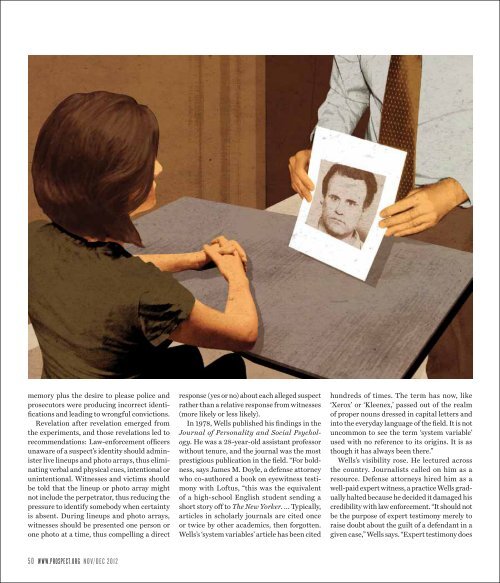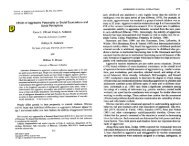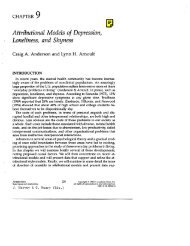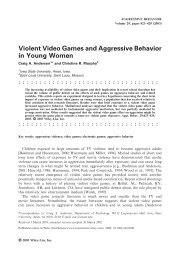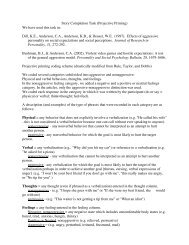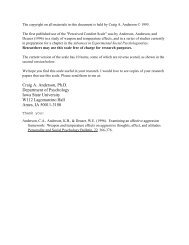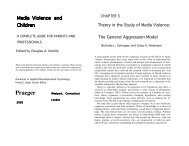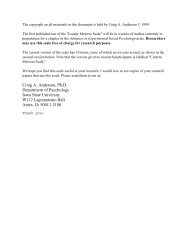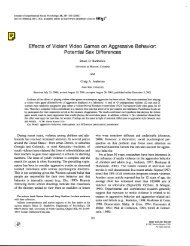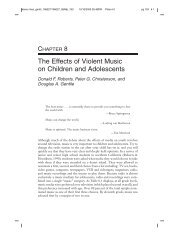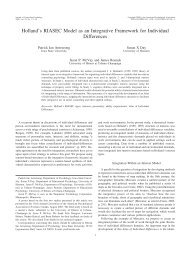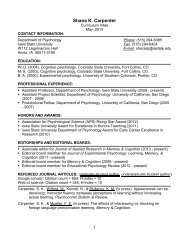Seeing is believing - Department of Psychology - Iowa State University
Seeing is believing - Department of Psychology - Iowa State University
Seeing is believing - Department of Psychology - Iowa State University
You also want an ePaper? Increase the reach of your titles
YUMPU automatically turns print PDFs into web optimized ePapers that Google loves.
memory plus the desire to please police and<br />
prosecutors were producing incorrect identifications<br />
and leading to wrongful convictions.<br />
Revelation after revelation emerged from<br />
the experiments, and those revelations led to<br />
recommendations: Law-enforcement <strong>of</strong>ficers<br />
unaware <strong>of</strong> a suspect’s identity should admin<strong>is</strong>ter<br />
live lineups and photo arrays, thus eliminating<br />
verbal and physical cues, intentional or<br />
unintentional. Witnesses and victims should<br />
be told that the lineup or photo array might<br />
not include the perpetrator, thus reducing the<br />
pressure to identify somebody when certainty<br />
<strong>is</strong> absent. During lineups and photo arrays,<br />
witnesses should be presented one person or<br />
one photo at a time, thus compelling a direct<br />
response (yes or no) about each alleged suspect<br />
rather than a relative response from witnesses<br />
(more likely or less likely).<br />
In 1978, Wells publ<strong>is</strong>hed h<strong>is</strong> findings in the<br />
Journal <strong>of</strong> Personality and Social <strong>Psychology</strong>.<br />
He was a 28-year-old ass<strong>is</strong>tant pr<strong>of</strong>essor<br />
without tenure, and the journal was the most<br />
prestigious publication in the field. “For boldness,<br />
says James M. Doyle, a defense attorney<br />
who co-authored a book on eyewitness testimony<br />
with L<strong>of</strong>tus, “th<strong>is</strong> was the equivalent<br />
<strong>of</strong> a high-school Engl<strong>is</strong>h student sending a<br />
short story <strong>of</strong>f to The New Yorker. … Typically,<br />
articles in scholarly journals are cited once<br />
or twice by other academics, then forgotten.<br />
Wells’s ‘system variables’ article has been cited<br />
hundreds <strong>of</strong> times. The term has now, like<br />
‘Xerox’ or ‘Kleenex,’ passed out <strong>of</strong> the realm<br />
<strong>of</strong> proper nouns dressed in capital letters and<br />
into the everyday language <strong>of</strong> the field. It <strong>is</strong> not<br />
uncommon to see the term ‘system variable’<br />
used with no reference to its origins. It <strong>is</strong> as<br />
though it has always been there.”<br />
Wells’s v<strong>is</strong>ibility rose. He lectured across<br />
the country. Journal<strong>is</strong>ts called on him as a<br />
resource. Defense attorneys hired him as a<br />
well-paid expert witness, a practice Wells gradually<br />
halted because he decided it damaged h<strong>is</strong><br />
credibility with law enforcement. “It should not<br />
be the purpose <strong>of</strong> expert testimony merely to<br />
ra<strong>is</strong>e doubt about the guilt <strong>of</strong> a defendant in a<br />
given case,” Wells says. “Expert testimony does<br />
50 WWW.Prospect.org nov/dec 2012


